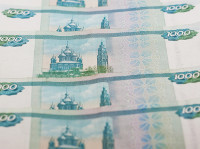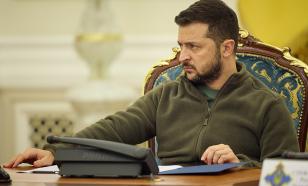Russia not planning plastic money
The issuance of paper banknotes is more cost effective than the production of plastic bank notes. Russia's Goznak does not plan to introduce plastic money on the Russian market, Goznak General Director Arkady Trachuk said in an interview with the Rossiyskaya Gazeta newspaper.

"In the near future, I think, we are not going to surprise you with something radically new. We are not planning either a 3,000-ruble note, or plastic money," he said.
According to Trachuk, many of the countries that introduced plastic money tend to refuse from them in three or four years and go back to paper money. There are countries that switch to plastic money of small denominations only, but keep large denomination money in paper.
"From the point of view of duration, price and quality, paper money is usually more effective than plastic money," the official said.
"And given the problems of the disposal of plastic money and the fact that there is only one company in the world that manufactures the substrate, on which one can print these notes, the story turns out to be not so interesting at all," he added.
However, he added, the situation may change over time.
Earlier it was reported that the Bank of England decided to issue new banknotes of 5 and 10 pounds - not on paper, but on a polymeric carrier. A study said that such money would be cleaner, safer and more durable than paper money. Plastic money will have greater protection against counterfeiting, the report from the Bank of England said.
For the time being, there are more than 20 countries in the world that use plastic money.
The Bank of Russia analyzes the world experience of using notes made on plastic (polymer substrate). It was said that, as a rule, polymer substrates are used to print banknotes in the countries with hot and humid climate to increase the stability of banknotes to circulation factors in harsh climatic conditions.
The experience of countries such as Mexico and Romania shows that the transition from paper to polymer banknotes does not guarantee protection from counterfeiting. On the contrary, it leads to an increase in the production of high quality fakes.
Russia's largest bank note currently is 5,000 rubles, which is about $145 or EUR 107. A smaller note is 1,000 rubles.
Federal State Unitary Enterprise Goznak or State Insignia) is a Unitary enterprise in Russia, responsible for the production of coins and bank notes. The agency administers the whole process cycle of bank note manufacturing. It incorporates several factories involved in different stages of the production cycle. Although the initial scope of Goznak had been the production of bank notes, the production of coins was added to its field of operations in 1941. Production of orders of the Ministry of Finance of the Russian Federation was also administered by Goznak.
Goznak combines paper and printing facilities, which manufacture money, government bonds, checks, letters of credit, savings-bank books, lottery tickets, postage stamps, blanks of passports, birth certificates, marriage licenses, as well as publications of high artistic value and special and high-grade paper. Goznak also controls mints, which manufacture small change, orders, decorations, and commemorative medals. It also manufactures credit cards, banking cards, phone cards, and SIM chips. Goznak prints not only Russian money, but also banknotes of foreign countries, such as Lebanon,Yemen, Guatemala, Indonesia and Egypt.
Pravda.Ru
Subscribe to Pravda.Ru Telegram channel, Facebook, RSS!


